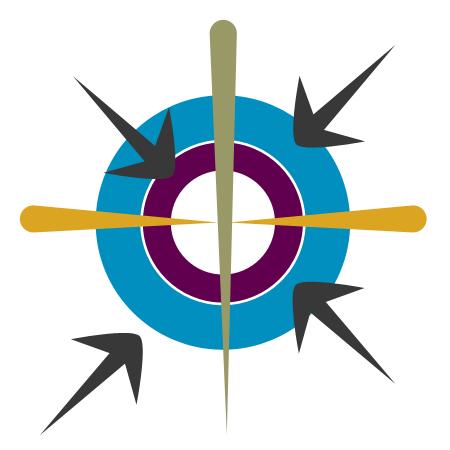MEDIA
THE STRATEGIC FORESIGHT GROUP ALWAYS HAS AN INTERESTING WAY OF EXPLAINING THIS
"At the SAARC Summit in January 2004, India and Pakistan decided to turn over a new leaf. The success of the Composite Dialogue is predicated on reduction of violence and terrorism on the ground and the determination of negotiators to proceed at the table. At this stage, when obstacles are bound to challenge the peace process, it is necessary for the public opinion to be aware of the cost of conflict. The cost is not only to be measured in terms of military expenditure but also on the basis of varied parameters such as discounting of GDP growth, terror economy growth, negative transformation of institutions, politicide, diplomatic losses, education costs, value deficit, and, most important, human costs."
This is from a new book published by the International Centre for Peace Initiatives/Strategic Foresight Group (SFG), titled Cost of Conflict Between India and Pakistan.
This is not the first time someone has tried to estimate the costs of conflict. However, something having been done earlier is no argument against it being attempted again, especially if dissemination is inadequate. That apart, those familiar with SFG's earlier publications (The Future of Pakistan, Rethinking India's Future and Shifting Sands: Instability In Undefined Asia) know that SFG produces extremely good copy. That alone is a good enough argument for producing a publication like the present one.
The estimated costs of conflict are broken up into military costs, social and political costs, economic costs, diplomatic costs and costs for Jammu & Kashmir, apart from a case study of possible nuclear confrontation. Here is a sample to persuade you to read the book.
The human costs for India and Pakistan of four wars (1947-48, 1965, 1971, 1999) are a combined death toll of 22,600 and 50,000 maimed or wounded on both sides. Siachen costs India (2002-03 figures) Rs 14.6 billion per year and 0.07 per cent of GDP. "Since 2003 was the year of the Prime Minister's peace initiative and 2004, the election year for India, the possibility of a future India-Pakistan confrontation, a la 2002 mode, lies somewhere in between 2005 and 2007. The duration of such a confrontation will not be more than 10-11 months, as continuance of conflict beyond that period will lead to a war. Cost escalation will be at least 50 per cent of cost incurred in 2002. Assuming an average growth of 7 per cent for India and 4.5 per cent for Pakistan, the costs will account for approximately 0.43 per cent of GDP for India and 2.25 per cent for Pakistan in 2007."
India's defence expenditure is roughly 2.5 per cent of GDP and Pakistan's is roughly 4 per cent of GDP. "A cut in defence outlay could release 1 per cent of GDP in India's case and nearly 2.5 per cent of GDP in Pakistan's case".
Within the military costs category, there are formal military expenditure estimates. But there is also informal expenditure. This document calls this the gross terror economy product (GTP) and tries to estimate some of its components. Pakistan's GTP is estimated at 6 per cent of GDP and Kashmir's GTP is Rs 3.5 bn per year. The Kashmir conflict is "over 0.25 per cent of total area of India and Pakistan, 0.25 per cent of the total economy of India and Pakistan and slightly over 0.25 per cent of the combined population of India and Pakistan".
Estimates of economic damage to physical infrastructure (buildings, houses, bridges, shops, hospitals) in Kashmir are Rs 4 bn between 1989 and 1996. An estimated 27.3 million fewer tourists visited Kashmir between 1989 and 2002. "Even at very conservative estimates, the loss of revenue due to non-arrival of tourists in the valley comes to a staggering Rs 165 billion over the period from 1989-02. Thus, the per year loss to state government comes to Rs 13 billion, which is more than half of the state's annual outlay of 2002-03."
As against per capita assistance of Rs 1,137 to other states, J&K gets Rs 8,092 per capita. "The Central government reimburses the entire security related expenditure of the state, including the expenditures on financial assistance to Kashmiri migrants, welfare activities, additional expenditure on police and security works and related activities. It also reimburses election related additional security expenditure to the state. Between 1989 and 2002, New Delhi reimbursed a total of Rs 23.6 billion as security related expenditure". Such estimates are conventional. At best, there are differences in methodology with what other people have done, although most other estimates of cost of conflict tend to focus on trade matters.
After estimating such costs, the book moves on to a Humphrey Hawksley kind of scenario. "Continued conflict with India, domestic turmoil due to heightened inter provincial disputes and lack of economic and social development, would make Pakistan's internal situation very volatile and unstable by 2010. Enforced large-scale unemployment would force the rural youth to join jihadi outfits. Jihadi forces will grow from 150,000-200,000 in 2003 to about half the size of Pakistan's military by 2010. The Pakistani establishment would collapse. India will find it difficult to manage the massive refugee influx of about 10-15 million people with the potential to upset the demographic and economic balance of important cities in western India... . By 2010, with its imminent collapse looming large, Pakistan would be forced to strike India to consolidate its own domestic failure... . An impending defeat might lead the Pakistan military or ISI or the extremist elements to take over nuclear command and launch a nuclear strike on India... . Disregarding the international appeals, India will carry out retaliatory nuclear strike on a major Pakistani city. ...the possibility of this discontinuity is near zero. But it is necessary to examine it because there have been press reports of at least two occasions in the last decade when Pakistan's military leadership evaluated the nuclear option at least at the preliminary level."
There is a foreword by Niaz Naik, Pakistan's former foreign secretary and he says, "While people are aware that costs are incurred in the hostility between India and Pakistan, they often believe that such costs are manageable."
By implication, and as this document argues, the costs aren't actually manageable. By virtue of opportunity costs and by virtue of extrapolation. And as I have said earlier, Sundeep Waslekar always figures out a very interesting way of telling you this.






